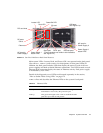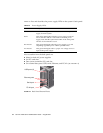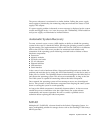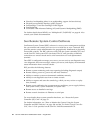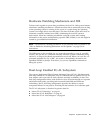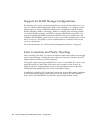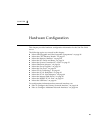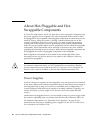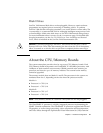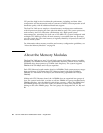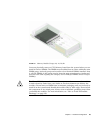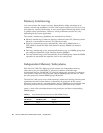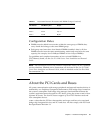
24 Sun Fire V490 Server Administration Guide • August 2004
Support for RAID Storage Configurations
By attaching one or more external storage devices to the Sun Fire V490 server, you
can use a software RAID application, such as Sun StorEdge™, to configure system
disk storage in a variety of different RAID levels. Configuration options include
RAID 0 (striping), RAID 1 (mirroring), RAID 0+1 (striping plus mirroring), RAID
1+0 (mirroring plus striping), and RAID 5 (striping with interleaved parity). You
choose the appropriate RAID configuration based on the price, performance, and
reliability and availability goals for your system. You can also configure one or more
drives to serve as “hot spares” to fill in automatically for a defective drive in the
event of a disk failure.
For more information, see “About Volume Management Software” on page 65.
Error Correction and Parity Checking
Error correcting code (ECC) is used on all internal system data paths to ensure high
levels of data integrity. All data that moves between processors, memory, and PCI
bridge chips have end-to-end ECC protection.
The system reports and logs correctable ECC errors. A correctable ECC error is any
single-bit error in a 128-bit field. Such errors are corrected as soon as they are
detected. The ECC implementation can also detect double-bit errors in the same
128-bit field and multiple-bit errors in the same nibble (4 bits).
In addition to providing ECC protection for data, the system offers parity protection
on all system address buses. Parity protection is also used on the PCI and SCSI
buses, and in the UltraSPARC IV processors’ internal and external caches.




